Homewares we loved in the 60s you don’t get anymore
Gone but not forgotten
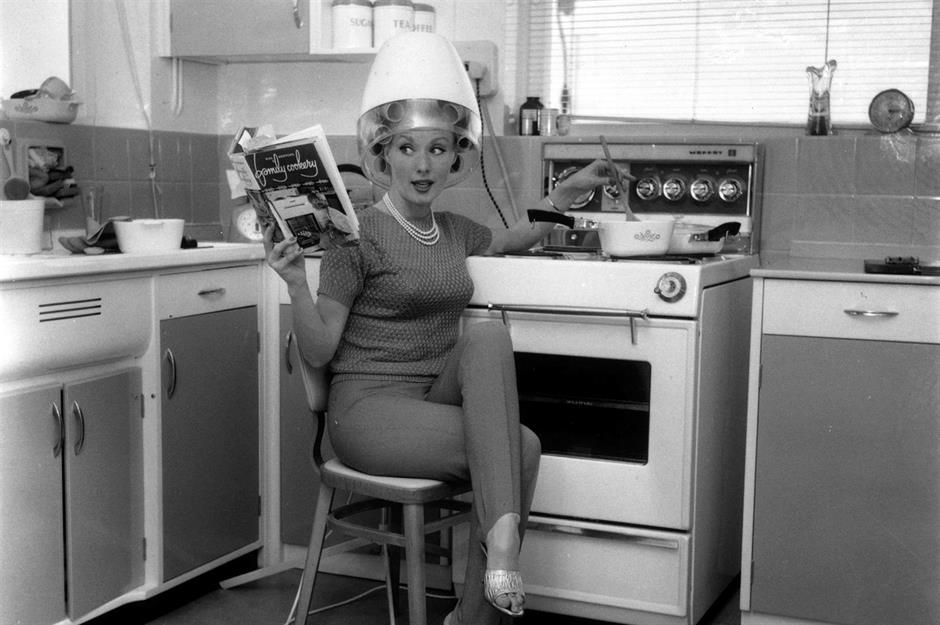
The 1960s were a decade of bold design, futuristic thinking, and everyday innovations that reshaped life at home.
From hostess trolleys and radiogram cabinets to fondue sets, shag carpets, and boxy television consoles, interiors reflected a mix of optimism, cultural change, and quirky convenience.
Some of these household icons have vanished, while others linger in vintage shops and retro-styled homes.
Click or scroll to rediscover the homewares that defined sixties living but are rarely seen today...
Console TVs
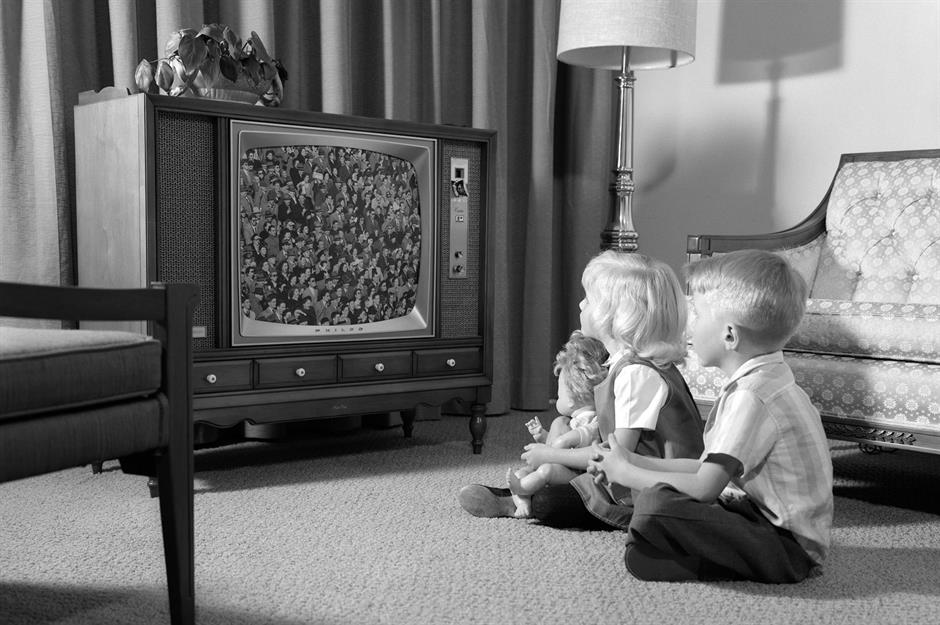
First mass-produced in the 1930s, console televisions became a household staple by the postwar years, evolving into the bulky, wood-framed sets so familiar in the 1960s. By the end of this decade, screens were larger, picture tubes more reliable, and many models featured integrated speakers and storage, transforming the TV into a piece of living room furniture.
Families gathered nightly to watch news, dramas, and historic broadcasts like the 1969 moon landing. Though once symbols of modernity, console TVs were eventually replaced by lighter, portable sets in the 1970s.
Carpet beaters
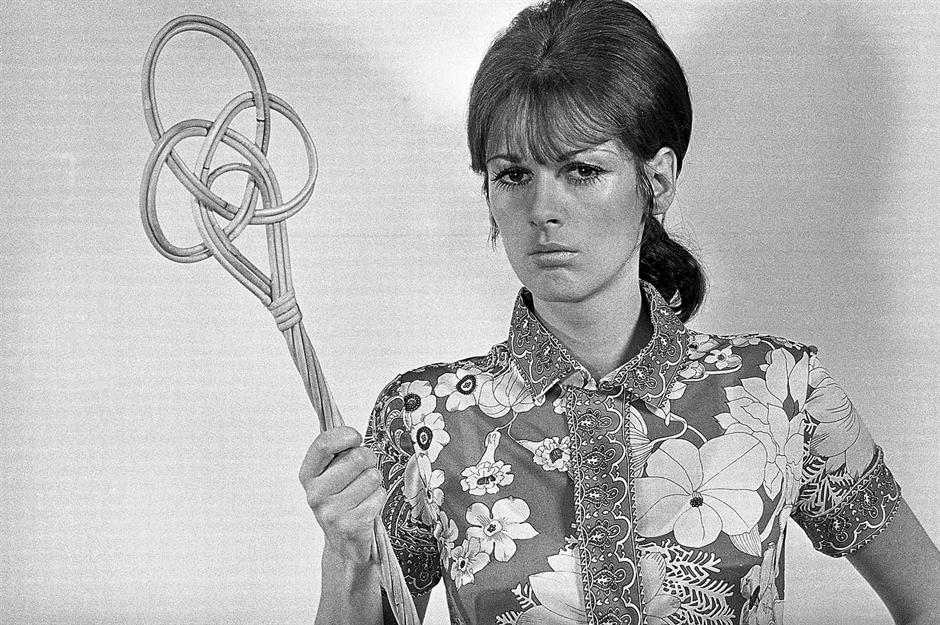
Though carpet beaters had been around for centuries, they were still a familiar sight in 1960s homes. Before the widespread use of powerful vacuum cleaners, rugs and carpets were hauled outside and struck with rattan or wire beaters to shake out dust.
It was tiring work, but in a decade when thick shaggy rugs became increasingly popular, it remained a practical cleaning tool. Over the years, as technology advanced and domestic routines accelerated, the once-essential carpet beater has quietly faded into history.
Serving hatches
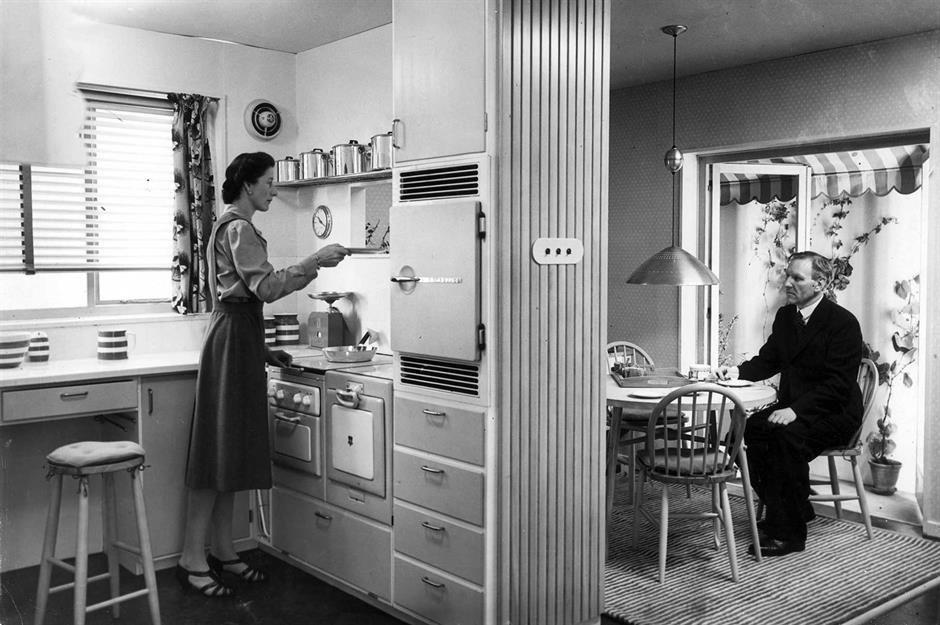
A familiar feature of many mid-century homes, serving hatches connected the kitchen and dining room with a small opening in the wall. Popular in Britain and the US from the 1940s through the 1980s, they allowed food to be passed through without the need to carry heavy trays back and forth.
They also gave the cook some privacy while still keeping connected to family or guests. As the years went on, open-plan layouts replaced the need for hatches, making them a nostalgic relic of domestic design.
Magazine racks
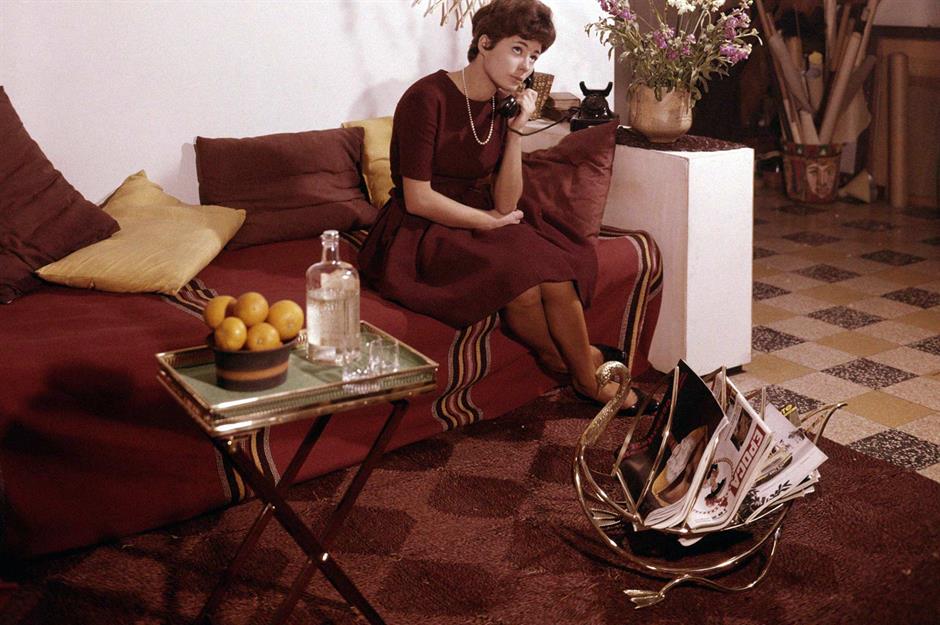
Before tablets and online subscriptions, homes of the 1960s often had a dedicated magazine rack in the living room. These came in countless designs, from sleek chrome and wood to whimsical swan shapes like the one pictured.
With glossy lifestyle weeklies and fashion magazines enjoying a boom, racks kept reading material neatly displayed and close to hand for visitors. They also reflected the growing role of leisure and consumer culture in postwar life. As print reading declined and interiors streamlined, the humble magazine rack has almost disappeared.
Platform beds
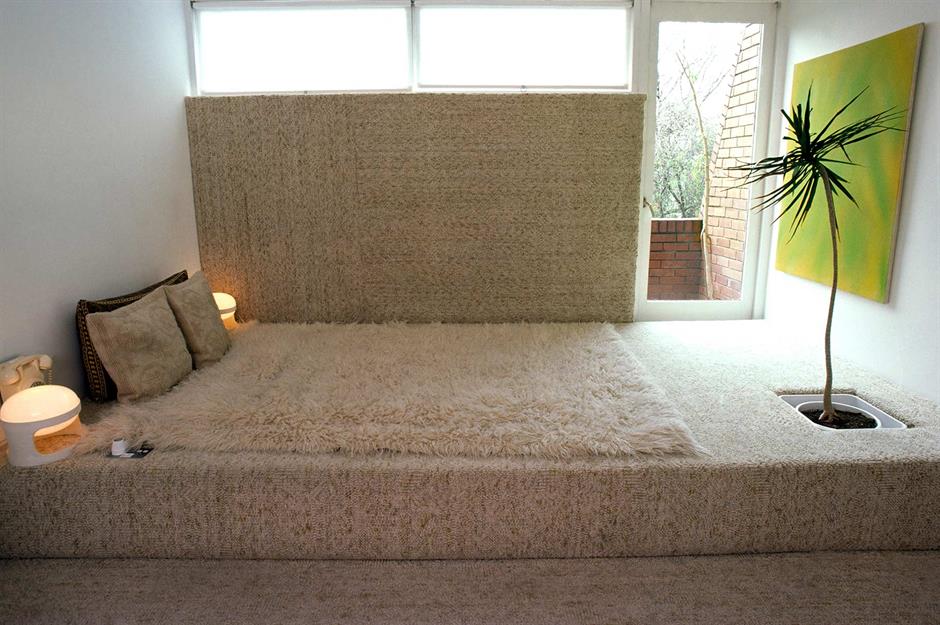
Low-slung platform beds became a hallmark of 1960s interiors, often designed as part of built-in bedroom schemes. Many were covered in textured carpet, like this cream version complete with a sunken space for a potted plant, merging furniture with architecture in true mid-century style.
Their minimalist lines reflected the influence of Japanese design, which inspired Western interiors at the time. While today’s beds favour sleek frames or upholstered headboards, these expansive, carpeted platforms captured the decade’s love of comfort and experimental living.
Dressing table sets
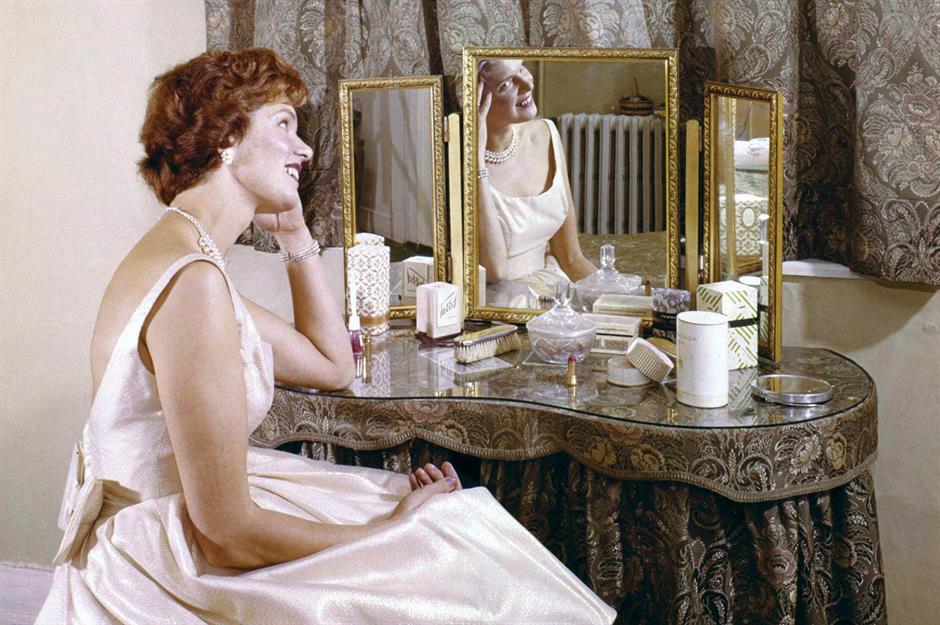
Throughout the 1960s, no stylish bedroom was complete without a dressing table topped with an elegant set of accessories. Often made from cut glass or crystal, these matching pieces might include a tray, hairbrush, perfume bottles, and canisters for cotton wool or powder.
They harked back to earlier traditions of refined grooming but still held pride of place in postwar homes, reflecting the era’s emphasis on polished femininity.
As everyday routines became quicker and more practical, such ornate sets gradually fell out of fashion.
Radiogram cabinets

Blending entertainment with elegant furniture, radiogram cabinets were a centrepiece of many 1960s living rooms. First appearing in the 1920s, these units had evolved by the sixties into stylish sideboards housing a radio and record player, often hidden beneath a hinged lid.
They were designed to complement mid-century décor, with wood veneers and clean lines that matched other furnishings. Families would gather around to listen to LPs or the latest radio broadcasts, but by the 1970s, compact hi-fi systems made these hefty radiograms feel old-fashioned.
Touch-tone phones
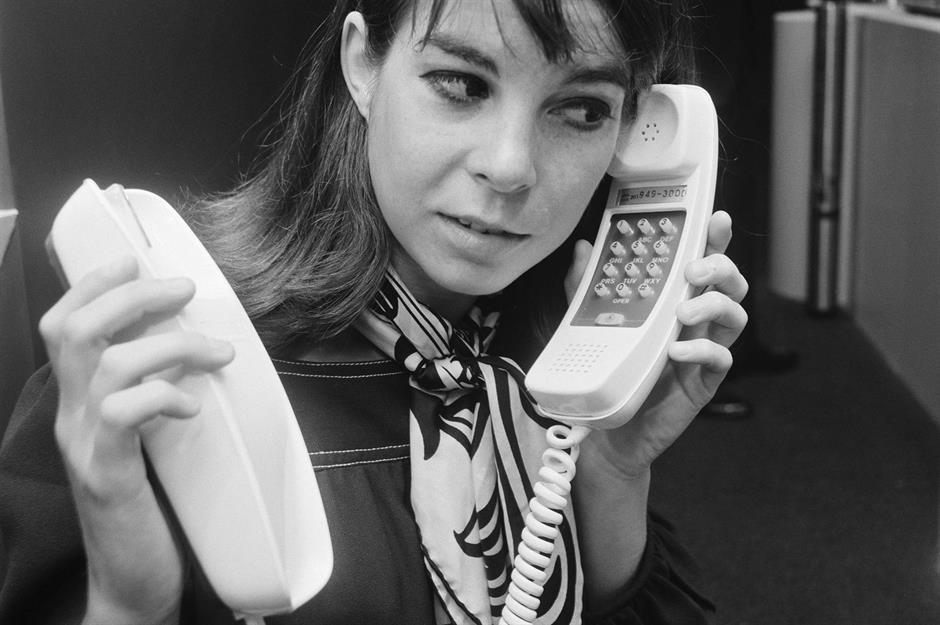
Replacing the familiar rotary dial, the touch-tone phone was introduced by AT&T in 1963 and marked a new era in communication. With push-button digits and a sleeker design, it promised faster, more reliable connections than the whirring clicks of older models.
By the late 1960s, stylish versions like the Trimline, designed by Henry Dreyfuss Associates, were displayed at exhibitions such as 'Design 69' in London as symbols of modern living.
Although revolutionary at the time, touch-tone handsets were eventually swept aside by cordless models and mobiles.
Overhead hairdryers
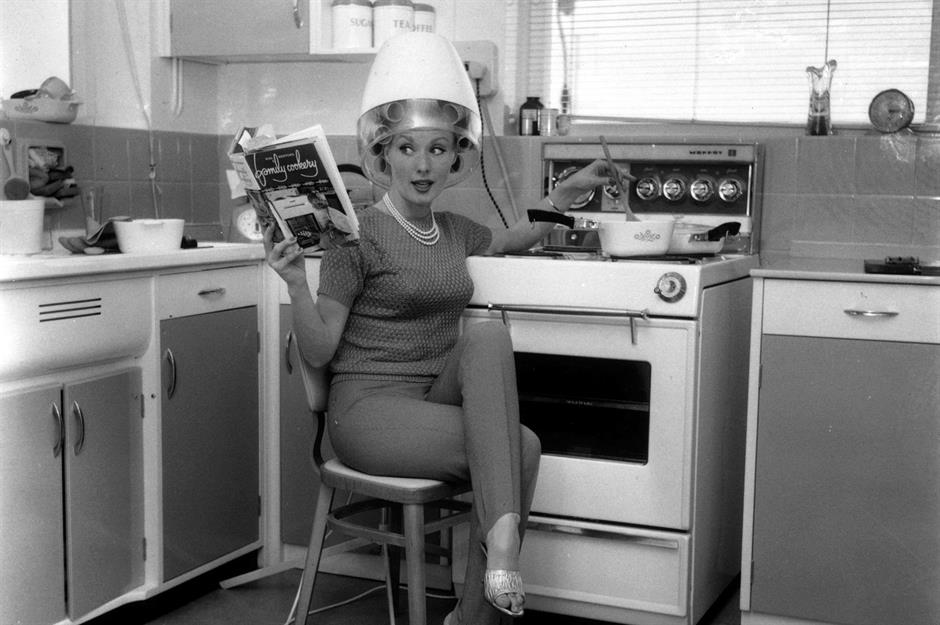
Before the lightweight handheld models we know today, home hairdryers in the 1960s often mimicked the salon experience. Overhead dryers with large plastic hoods were marketed to women who wanted professional-style curls without leaving the house.
They were bulky, noisy, and required sitting still for long stretches, but in an era when weekly sets and lacquered hairstyles were in fashion, they were indispensable.
As beauty routines became quicker and more casual in the 1970s, these futuristic-looking dryers quietly disappeared from everyday homes.
Heated hostess trolleys

A must-have for the stylish entertainer, the heated hostess trolley became a dinner-party essential in the 1960s. These plug-in cabinets on wheels contained heated shelves and lidded compartments that kept food warm for hours, meaning roasts, casseroles, and vegetables could be cooked in advance and wheeled out at leisure.
Hosts loved the freedom of staying with their guests instead of rushing in and out of the kitchen. As eating habits became more casual and open-plan layouts took over from separate dining rooms, the hostess trolley slowly rolled out of fashion.
Matching bedroom sets
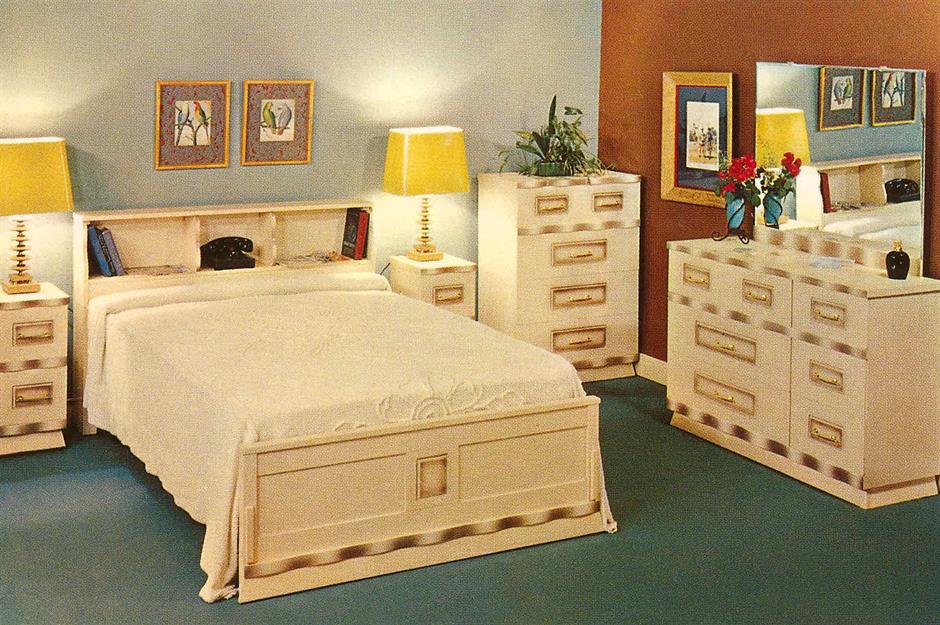
By the mid-1960s, coordinated bedroom suites became the height of aspirational home décor. These sets, often including a bed, dresser, vanity and bedside tables, created a uniform look that reflected the era’s love of symmetry and order.
They were marketed as a complete lifestyle package, making it easier for families to furnish their homes in one purchase. Typically produced from wood or in high-shine lacquered finishes with bold handles, they came in a range of styles from decorative to streamlined teak as mid-century design progressed.
Electric carving knifes
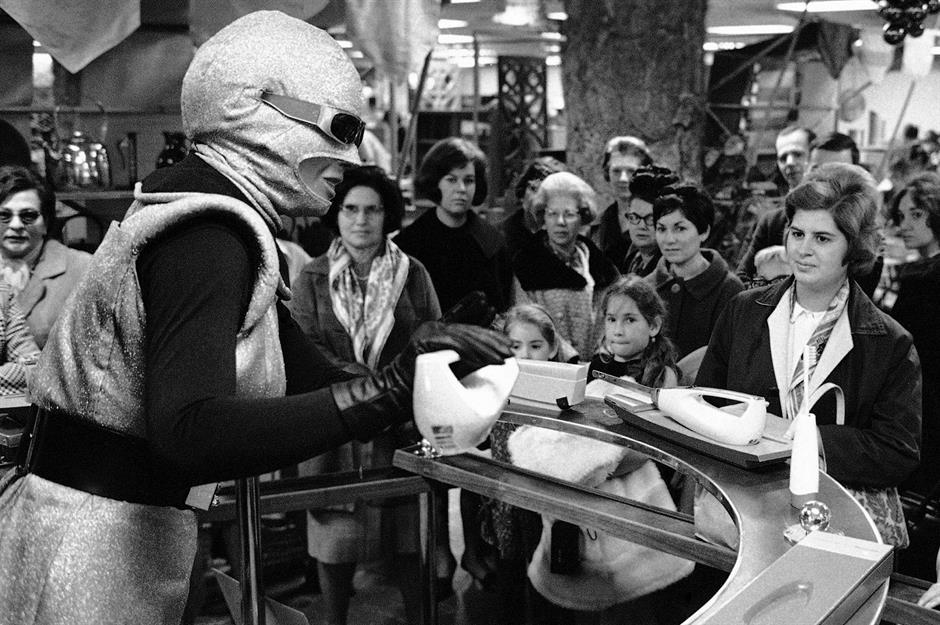
The electric carving knife was a 1960s kitchen marvel, promoted as the modern way to slice everything from Sunday roasts to crusty bread with minimal effort. Its serrated blades worked like tiny saws, buzzing through meat in seconds, and demonstrations, like this one at Macy’s in 1966, drew fascinated crowds.
While initially seen as a futuristic timesaver in a decade obsessed with gadgets, it proved noisy and hard to clean. By the late 20th century, most households quietly returned to the trusty manual carving knife.
Round chairs
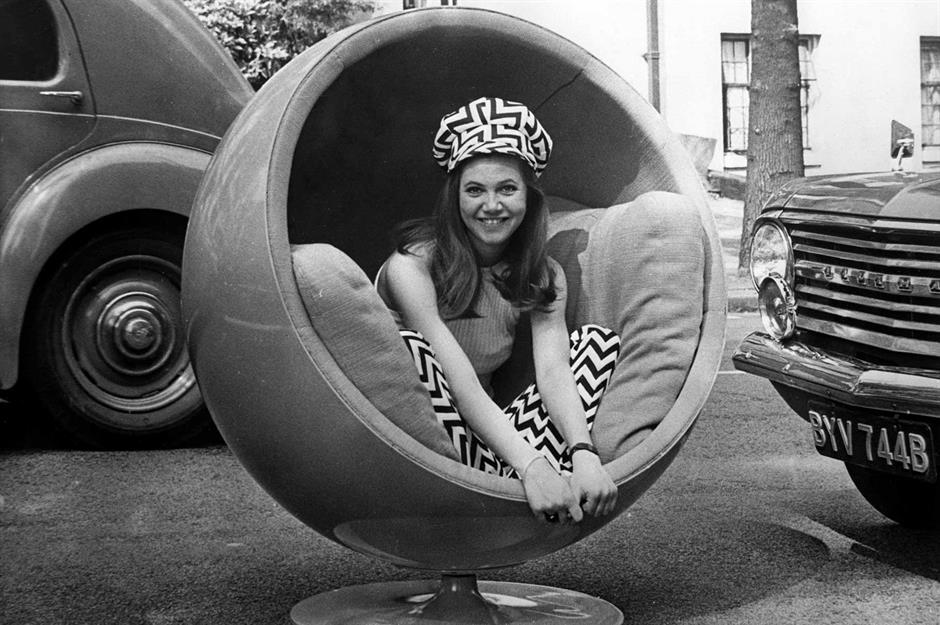
Few pieces of furniture capture the futuristic optimism of the 1960s quite like the round ball or Bomb chair, designed by Finnish innovator Eero Aarnio in 1963.
Made from fibreglass, it enclosed the sitter in a cocoon of sound and colour, echoing the decade’s obsession with space-age design during the Cold War and the race to the moon.
These sculptural seats appeared in glossy magazines and swinging bachelor pads, but their bulky size and impracticality for everyday homes meant their popularity faded after the decade.
Radio alarm clocks
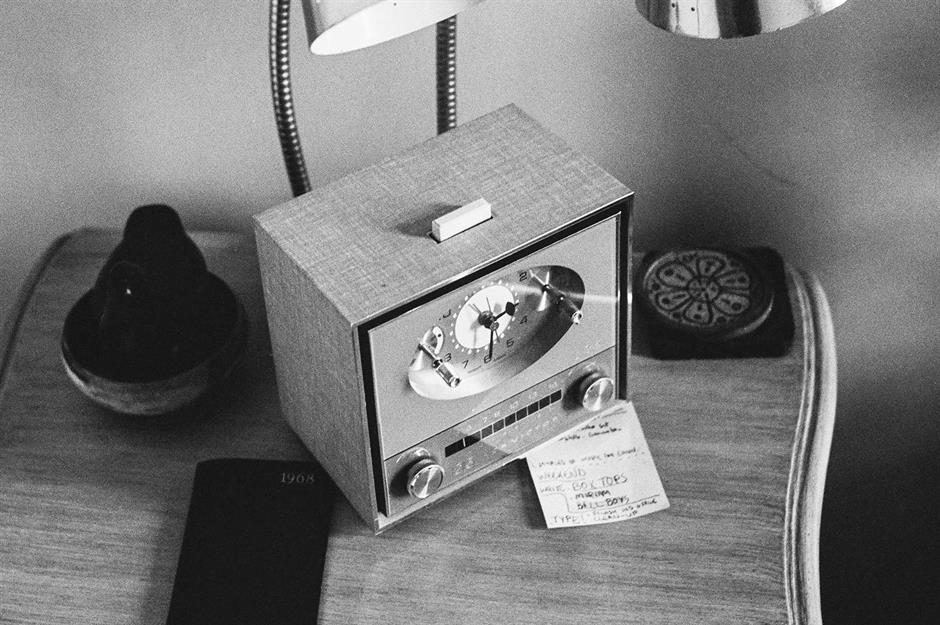
Long before smartphones took over, the 1960s saw the rise of the radio alarm clock, which combined timekeeping with the latest pop hits or news bulletins. Waking up to the Beatles or Motown felt thoroughly modern compared with a traditional bell alarm.
These boxy devices, often in wood veneer or fabric finishes, became a fixture on bedside tables throughout the decade. As technology advanced and digital clocks appeared in the 1970s, their clunky analogue dials and knobs soon looked outdated, and the trend faded.
Fondue sets

Few items summed up 1960s dinner-party culture better than the fondue set. Inspired by Swiss traditions but embraced worldwide, these enamel pots and long-stemmed forks became the ultimate symbol of sociable dining.
Couples and friends would gather around bubbling cheese or hot oil, dipping bread, meat, or even fruit in a shared pot.
At a time when entertaining at home was fashionable and exotic foods were becoming more accessible, the fondue felt chic and continental. By the 1980s, though, the craze had fizzled out.
Bean bags
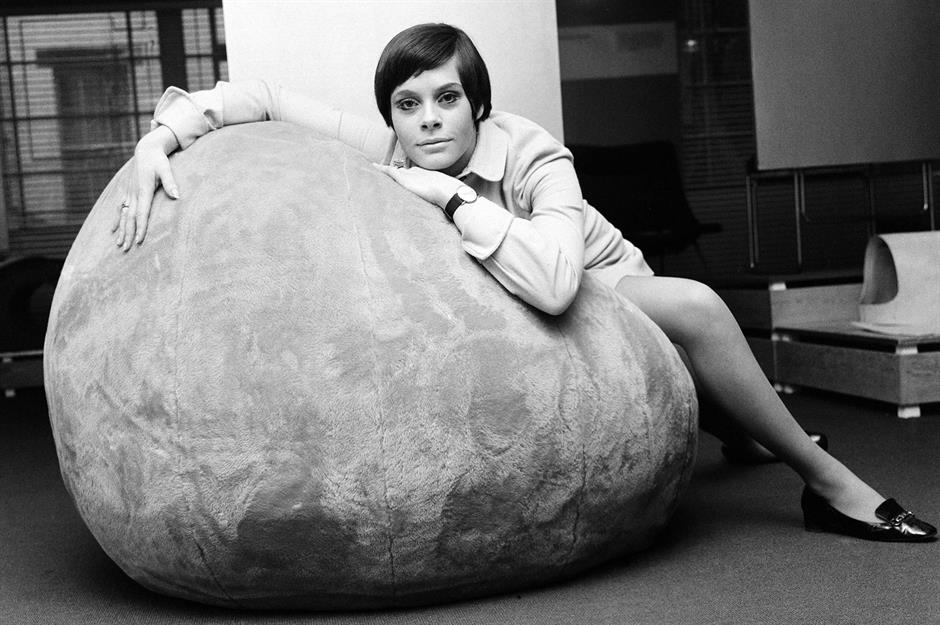
Unveiled in 1968 by Italian designers Piero Gatti, Cesare Paolini and Franco Teodoro, the bean bag, originally called the Sacco, was an instant symbol of countercultural cool. Instead of rigid frames, it was filled with polystyrene beads that moulded to the body, reflecting the decade’s more relaxed, anti-establishment lifestyles.
Affordable, fun, and endlessly adaptable, bean bags were especially popular with students and young homeowners embracing informal living. While they’ve resurfaced in various forms since, few modern interiors rely on them as a centrepiece of everyday seating.
Linea 1 TV set
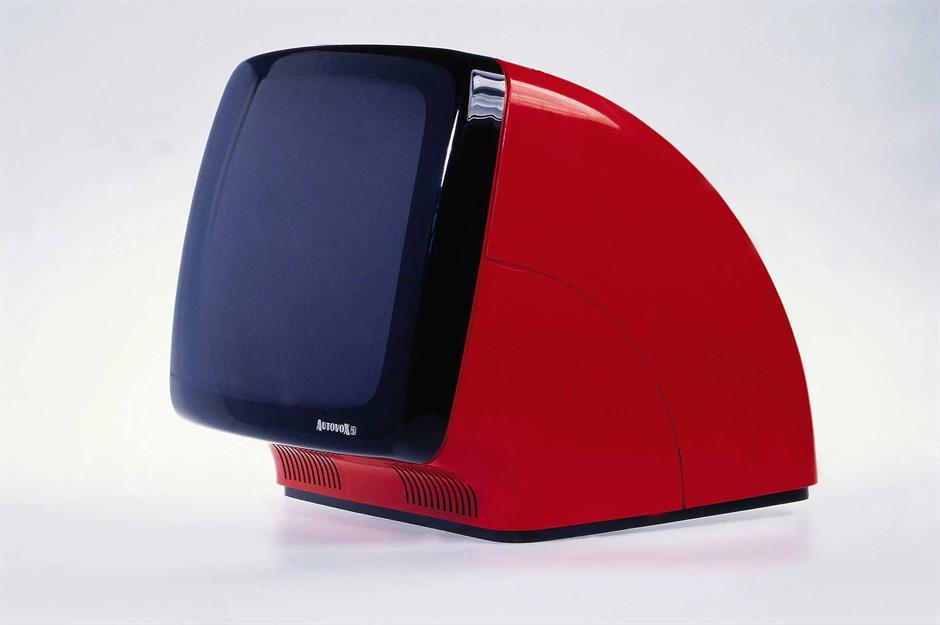
Launched in 1969, the Linea 1 television by Italian designer Rodolfo Bonetto looked more like space equipment than a household gadget. Created for Autovox, its bold curves and glossy red shell were said to be inspired by NASA monitors glimpsed during the Apollo moon landing.
With a 13-inch screen and rotating chassis, it blended futuristic form with practical function, epitomising the optimism of the space age. While most families stuck with boxy wood-framed sets, the Linea 1 remains a striking symbol of daring 1960s design.
Bead curtains
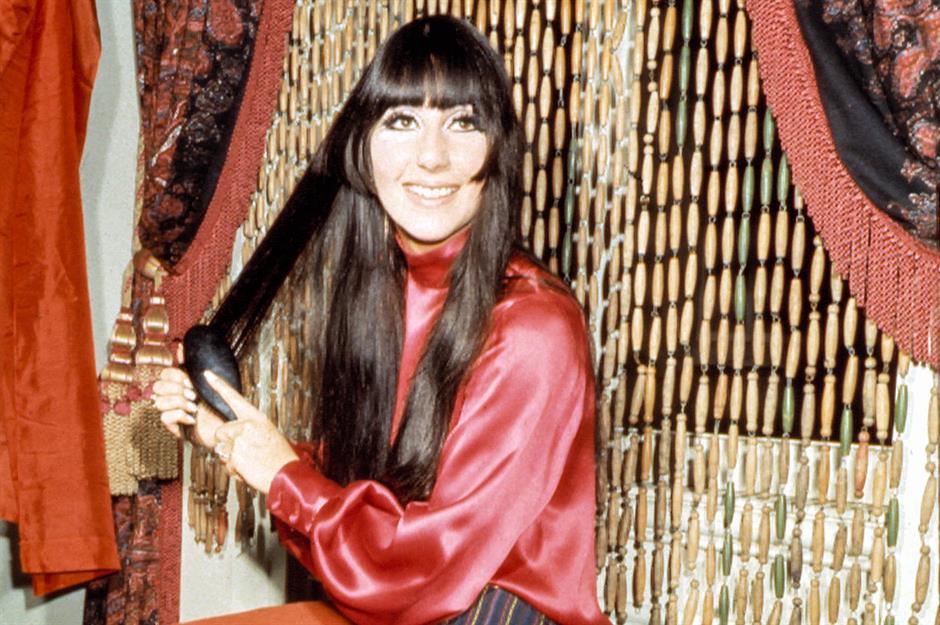
Bead curtains were a 1960s interior design craze, bringing a bohemian flair to homes. Hung in doorways or across walls, they swayed and clattered as people passed through, offering a playful alternative to solid doors.
Often made of wood, plastic, or bamboo, their patterns reflected the era’s interest in global influences and Eastern-inspired style.
Popular among young homeowners embracing countercultural trends, they added texture and movement to interiors. By the 1980s, bead curtains had largely vanished, surviving mainly as nostalgic retro décor.
Furry weighing scales

In the 1960s, even practical household objects were given a fashionable twist, and bathroom scales were no exception. Some models came with brightly coloured, furry covers, like this blue example, intended to make weighing yourself a more 'comfortable' and stylish experience.
They fitted neatly into the era’s love of bold textures and quirky design touches, bringing glamour to the bathroom, which would often extend to fluffy toilet seat covers, too. While they looked fun, the plush surface was hardly hygienic, and furry scales were quietly replaced by sleeker, wipe-clean versions.
Loved this? Check out more vintage decor and gone-by trends
Comments
Be the first to comment
Do you want to comment on this article? You need to be signed in for this feature